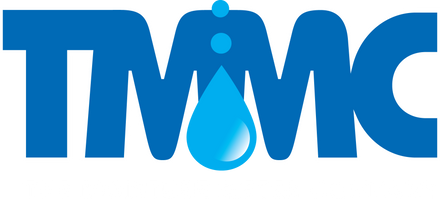There are many different ways to evaluate the efecicacy if cleaning, and each comes with pros and cons.
Visual inspection is quickly being replaced by quantifiable, objective methods. Managers need reliable data collection and objective measurement techniques to truly know if a surface is clean.
A simple method, like blacklight detection of fluorescent gels, is an excellent training tool, but fails to measure the actual removal of biological matter. Another technique is microbiology testing; microbiology tests give the most quantitative, specific results for pathogens or bacteria on a surface, but results are slow and tests are expensive. EVS and Infection Prevention need quick results to turn beds over faster, verify instrumentation is clean, and collect quantifiable data for meaningful analysis.
Compare other methods of cleaning verification including microbiology testing and visual inspection in the table below.

Ease of use.
ATP Cleaning Verification is extremely easy to use with a minimal amount of training. Other methods like microbiology testing require specialized skills, technical equipment, and extensive training. Though blacklight and visual inspection are relatively easy to use methods, other shortcomings, detailed below, make them a poor tool for monitoring environmental cleaning.
Objective.
According to the CDC and published research, an ideal monitoring tool for evaluating environmental cleaning should be objective, or not subject to any user bias. Visual inspection is the true opposite of objectivity since it is 100% the opinion of the evaluator whether a surface is clean. Blacklight inspection systems only measure the removal of fluorescent gels, so they are not objectively measuring cleanliness of a surface.
Specific.
Blacklight inspection systems only evaluate if the fluorescent gel was removed from a surface - they cannot measure actual surface contamination. The tool most successful at identifying specific microbiological matter is microbiology testing, which is still part of an effective infection control program. However, microbiology tests take several days and require specialized technicians, making them an inadequate method for evaluating environmental cleanliness in a hospital, where rooms need to be turned quickly and confidently. ATP tests detect all organic matter, which includes microbiological material, and deliver those results quickly in 15 seconds. Though ATP testing cannot replace microbiology testing for the identification of pathogens and specific microorganisms, ATP testing can serve as an indicator for potential microbiological matter.
Quantitative.
ATP Cleaning Verification gives a numeric measurement of organic material (ATP) on a surface, measured in relative light units (RLU). The more ATP present on a surface, the higher the RLU measurement. Neither blacklight inspection nor visual assessment can quantify the amount of organic material on a surface.
Qualitative.
The SystemSURE Plus displays a Pass, Caution, or Fail symbol on the screen when tests are measured, so results are clear and no interpretation is necessary.
Timeliness.
Microbiology tests can take up to 3 days for results, so they are not suitable for effectively measuring cleaning performance on a daily basis. Blacklight inspection requires managers to visit a patient room twice; first, after it has been vacated, before cleaning, to mark locations with fluorescent gel. After the room has been cleaned, management must return to the room a second time to inspect for removal of fluorescent gel marks. Since rooms are continually being turned over, managers are constantly visiting rooms to mark and inspect, taking away from time to accomplish other tasks. ATP Cleaning Verification Systems only require one visit to a room, after cleaning, where any surface can be swabbed and results are ready in 15 seconds.
Low cost.
With Hygiena’s ATP Cleaning Verification system, there are zero costs for software licenses, equipment leases, or yearly maintenance. The only costs associated with Hygiena’s ATP Cleaning Verification are the consumable swabs used. An ATP Cleaning Verification system is an affordable way to measure and manage cleaning.
Training tool.
ATP Cleaning Verification is a quick and easy way to show trainees if their cleaning efforts are effective. In 15 seconds, managers can measure ATP residues left behind after cleaning and show trainees an objective, numeric measurement of cleanliness. ATP Cleaning Verification can also be used as a hand washing training tool.
Management tool.
The data collected by Hygiena’s ATP Cleaning Verification system provides reports and data that offer powerful decision-making tools for managers. Managers can quickly identify trends, areas for improvement, or staff that may require retraining. ATP test scores can be tracked over time and compared to infection rates. Users typically see that a reduction in RLU scores (a cleaner facility) result in lower infection rates. In a case study at North Tees and Hartlepool hospitals in the United Kingdom, the implementation of ATP Cleaning Verification resulted in a drastic drop in C. diff infection (CDI) rates.
Fraud proof.
Unlike visual inspection or blacklight inspection tracking methods, ATP test results cannot be manipulated. Once tests are measured in Hygiena’s ATP Cleaning Verification system, they cannot be edited, overwritten, or deleted. Users cannot know if an ATP test will pass or fail until it is measured. With blacklight systems, cleaning personnel could easily use their own blacklight flashlight to search for spots in a room to clean.
Software analysis.
ATP Cleaning Verification is the only method with integrated software that allows users to store data, track trends, and analyze results.
Read more about methods in this special report: ATP Testing A Proven Method to Measure Cleanliness

